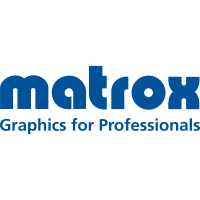Intel HD Graphics P4000 vs NVIDIA Quadro 7000
Comparative analysis of Intel HD Graphics P4000 and NVIDIA Quadro 7000 videocards for all known characteristics in the following categories: Essentials, Technical info, Video outputs and ports, Compatibility, dimensions and requirements, API support, Memory. Benchmark videocards performance analysis: PassMark - G3D Mark, PassMark - G2D Mark, Geekbench - OpenCL, GFXBench 4.0 - Manhattan (Frames), GFXBench 4.0 - Manhattan (Fps), GFXBench 4.0 - T-Rex (Frames), GFXBench 4.0 - T-Rex (Fps), CompuBench 1.5 Desktop - Face Detection (mPixels/s), CompuBench 1.5 Desktop - Ocean Surface Simulation (Frames/s), CompuBench 1.5 Desktop - T-Rex (Frames/s), CompuBench 1.5 Desktop - Video Composition (Frames/s), CompuBench 1.5 Desktop - Bitcoin Mining (mHash/s).
Differences
Reasons to consider the Intel HD Graphics P4000
- A newer manufacturing process allows for a more powerful, yet cooler running videocard: 22 nm vs 40 nm
- 4.5x lower typical power consumption: 45 Watt vs 204 Watt
- Around 60% better performance in PassMark - G2D Mark: 636 vs 397
| Specifications (specs) | |
| Manufacturing process technology | 22 nm vs 40 nm |
| Thermal Design Power (TDP) | 45 Watt vs 204 Watt |
| Benchmarks | |
| PassMark - G2D Mark | 636 vs 397 |
Reasons to consider the NVIDIA Quadro 7000
- 6.8x better performance in PassMark - G3D Mark: 3505 vs 516
- Around 67% better performance in GFXBench 4.0 - Manhattan (Frames): 3705 vs 2225
- Around 67% better performance in GFXBench 4.0 - Manhattan (Fps): 3705 vs 2225
- Around 36% better performance in GFXBench 4.0 - T-Rex (Frames): 3353 vs 2461
- Around 36% better performance in GFXBench 4.0 - T-Rex (Fps): 3353 vs 2461
| Specifications (specs) | |
| Core clock speed | 651 MHz vs 650 MHz |
| Benchmarks | |
| PassMark - G3D Mark | 3505 vs 516 |
| GFXBench 4.0 - Manhattan (Frames) | 3705 vs 2225 |
| GFXBench 4.0 - Manhattan (Fps) | 3705 vs 2225 |
| GFXBench 4.0 - T-Rex (Frames) | 3353 vs 2461 |
| GFXBench 4.0 - T-Rex (Fps) | 3353 vs 2461 |
Compare benchmarks
GPU 1: Intel HD Graphics P4000
GPU 2: NVIDIA Quadro 7000
| PassMark - G3D Mark |
|
|
||||
| PassMark - G2D Mark |
|
|
||||
| GFXBench 4.0 - Manhattan (Frames) |
|
|
||||
| GFXBench 4.0 - Manhattan (Fps) |
|
|
||||
| GFXBench 4.0 - T-Rex (Frames) |
|
|
||||
| GFXBench 4.0 - T-Rex (Fps) |
|
|
| Name | Intel HD Graphics P4000 | NVIDIA Quadro 7000 |
|---|---|---|
| PassMark - G3D Mark | 516 | 3505 |
| PassMark - G2D Mark | 636 | 397 |
| Geekbench - OpenCL | 1071 | |
| GFXBench 4.0 - Manhattan (Frames) | 2225 | 3705 |
| GFXBench 4.0 - Manhattan (Fps) | 2225 | 3705 |
| GFXBench 4.0 - T-Rex (Frames) | 2461 | 3353 |
| GFXBench 4.0 - T-Rex (Fps) | 2461 | 3353 |
| CompuBench 1.5 Desktop - Face Detection (mPixels/s) | 32.699 | |
| CompuBench 1.5 Desktop - Ocean Surface Simulation (Frames/s) | 1142.156 | |
| CompuBench 1.5 Desktop - T-Rex (Frames/s) | 3.796 | |
| CompuBench 1.5 Desktop - Video Composition (Frames/s) | 51.693 | |
| CompuBench 1.5 Desktop - Bitcoin Mining (mHash/s) | 110.277 |
Compare specifications (specs)
| Intel HD Graphics P4000 | NVIDIA Quadro 7000 | |
|---|---|---|
Essentials |
||
| Architecture | Generation 7.0 | Fermi 2.0 |
| Code name | Ivy Bridge GT2 | GF110 |
| Launch date | 14 May 2012 | 2 May 2012 |
| Place in performance rating | 615 | 697 |
| Type | Desktop | Workstation |
| Launch price (MSRP) | $14,499 | |
Technical info |
||
| Boost clock speed | 1250 MHz | |
| Core clock speed | 650 MHz | 651 MHz |
| Manufacturing process technology | 22 nm | 40 nm |
| Thermal Design Power (TDP) | 45 Watt | 204 Watt |
| Transistor count | 1,200 million | 3,000 million |
| Floating-point performance | 1,332 gflops | |
| Pipelines | 512 | |
| Texture fill rate | 41.66 GTexel / s | |
Video outputs and ports |
||
| Display Connectors | No outputs | 2x DVI, 1x S-Video |
Compatibility, dimensions and requirements |
||
| Interface | PCIe 1.0 x16 | PCIe 2.0 x16 |
| Length | 248 mm | |
API support |
||
| DirectX | 11.1 (11_0) | 12.0 (11_0) |
| OpenGL | 4.0 | 4.6 |
Memory |
||
| Maximum RAM amount | 6 GB | |
| Memory bandwidth | 177.4 GB / s | |
| Memory bus width | 384 Bit | |
| Memory clock speed | 3404 MHz | |
| Memory type | GDDR5 | |











